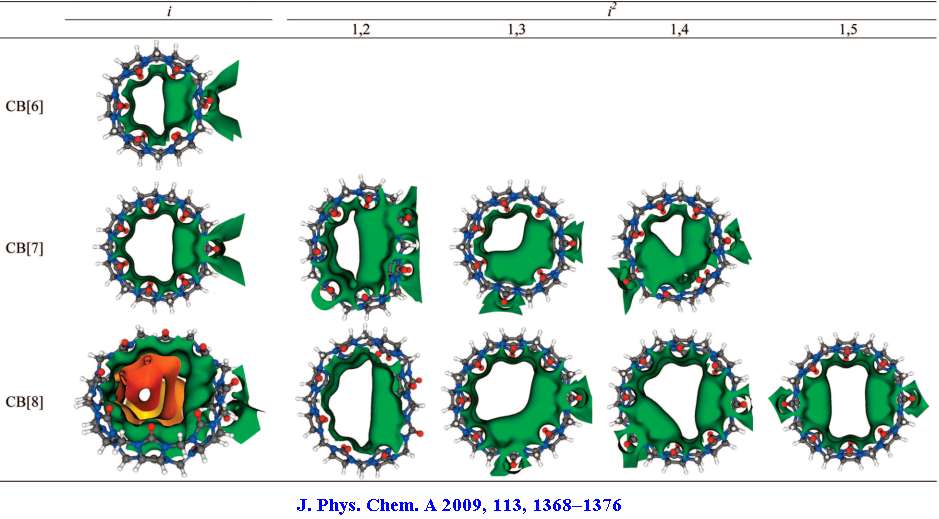
|

|
Research Interests
Inclusion phenomenon
| Host guest interactions with cyclodextrines, cucurbit[n]urils and cyclophane-cyclobis(paraquate-p-phenylene) (CBPQT) as novel hosts are being investigated. Binding patterns and spectral features and deeper insights for the complexation associated with inclusion phenomenon is being critically analyzed. Cyclodextrins and cucurbit[n]urils (CB[n]) are of growing interest as novel hosts in the recent years owing to their wide range of applications that range from drug delivery, separation technology, molecular recognition, catalysis, molecular machines/motors, rotaxanes to nanotechnology. Understanding the interactions of cyclodextrins and cucurbit[n]uril hosts with a variety of guest molecules following their encapsulation within the cavity of these macrocycles have become increasingly important in the recent years. The electronic charge distribution and the cavity dimension are some of the key factors those govern their interactions with cations or neutral guests. Fluorescence, UV-visible spectroscopy, and calorimetry experiments enable one to measure complexation energies. These techniques, however, provide only indirect and qualitative information about inclusion modes and geometries. Thus, structural characterization pertaining to relative orientation of a guest in the cyclodextrins cavity is of particular significance for the understanding of supramolecular host-guest complexation. Like cyclodextrins, the CB[n] macrocycles offer varying cavity size and regio-selectivity toward binding of variety of guests with the enhanced solubility in different solvents. |
 Fig.1 |